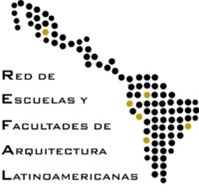Utopies built in Tacna. Study of the housing complexes built in the city of Tacna between the 1950s - 1970s
DOI:
https://doi.org/10.47796/ra.2023i24.848Keywords:
Collective housing, Public space, Modern movement, Government policies, TacnaAbstract
Throughout the 20th century, the significance and thinking of the modern movement, disseminated by the CIAM, was of great relevance in finding solutions to the new urban problems, based on alternative proposals such as the construction of housing units. Thus, at the end of the 1940s, modern architecture arrived in Lima with the construction of various collective housing projects. The vertical residence pilot was Neighborhood Unit No. 3, and for the horizontal proposal, the Previ Housing Project. In both constructions, not only was a solution provided to the homes internally; It also implied an articulation with public space.
Similarly, in the city of Tacna, at the end of the 1950s, a great urban expansion was experienced as a result of the massive migration of inhabitants from other regions of the country. This generated a high demand for residential spaces, which is why public policies promoted the execution of collective housing projects. In this context, the 28 de Agosto Association was executed, later, the Rosa Ara Residential Complex and the Tacna and Caplina urbanizations. The objective of this article is to interpret the concepts and foundations that supported these housing units. To do this, it is compared with the theories and architectural principles of the main projects executed in Lima, in order to understand the thinking of its representatives, the avant-garde, public policies, the goals of the rulers of that time for the future.
Downloads
Downloads
Published
How to Cite
Issue
Section
License
Copyright (c) 2023 Sergio Geovanni Castañeda Cordero, Angela Fernanda Galarza Mamani, Yamile Quispe Sagua, Eddie Waldo Gutierrez Cabellos, Alexandra Fabiola Neyra Flores

This work is licensed under a Creative Commons Attribution 4.0 International License.









